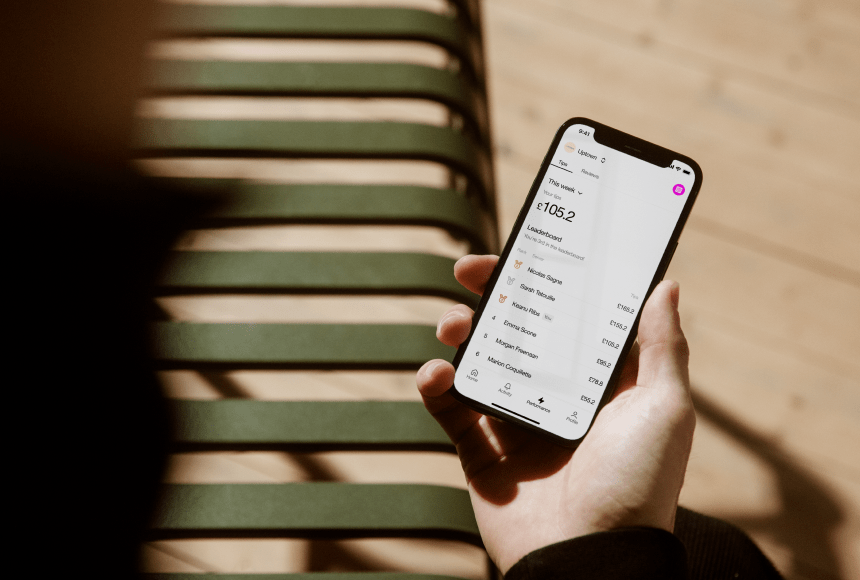
Selecting the Right Card Machine for a Smooth, Profitable Dining Experience
Why Your Payment Terminal Choice Matters
Picture a bustling Friday night in your restaurant. Tables are full, servers hurry from one order to the next, and your kitchen chugs along at top speed. Everything is going well — until a wave of guests all request the bill at the same time. If your card machine is slow, unreliable, or in short supply, you’ll end up with irritated customers and stressed-out staff.
That’s why picking the right payment terminal isn’t just about accepting cards. It’s about ensuring a smooth checkout experience, optimising tip opportunities, and maintaining positive energy in your restaurant. A well-chosen payment device can elevate your service, speed up table turnover, and enhance guest satisfaction. But how do you decide among the many terminal options out there? Read on for practical, honest guidance to help you find the ideal fit for your establishment.
Assessing Your Restaurant’s Specific Requirements
Before diving into any product reviews or sales pitches, take a close look at your own operation. Each restaurant is unique. By identifying your needs first, you can better navigate the sea of card machines and payment devices on the market.
Ask yourself:
- Payment Volume: How many transactions do you handle on an average day or during peak service?
- Checkout Flow: Are you bringing a device to each table, or do guests typically come to a till? Do you rely on staff-managed or self-checkout solutions, like QR code payments?
- Integration Needs: Do you want your payment terminal to talk to your POS? Do you need real-time sales tracking or synced tipping records?
- Mobility: Would a handheld wireless device benefit your service style, or is a countertop machine sufficient?
- Customer Preferences: Are your diners comfortable with contactless and digital wallets, or do they still heavily rely on chip-and-PIN?
Armed with these insights, you’ll be primed to zero in on the terminal specs and features that truly matter for your venue.
Choosing Between Basic and Smart Terminals
Broadly speaking, card machines fall into two categories these days: standard or “basic” terminals and “smart” (or advanced) devices.
- Standard Terminals:
These do what you expect: process card payments (including chip-and-PIN, magnetic strip, and contactless). They’re simple and typically cost less. However, they rarely integrate with other systems, and can’t run advanced apps or unify payments with your POS.
- Smart Devices:
Think touchscreen interfaces, smartphone-like features, and possibly the ability to place orders or show itemised bills right on the screen. Some can access Wi-Fi or 4G, send email receipts, display tip prompts, or even allow partial payments for split bills. They can also directly sync with your POS, removing manual data entry.
Where you land on this spectrum depends on your goals. If cost is paramount and you just want quick transactions, a basic terminal might suffice. If you crave deeper efficiency and are keen to reduce friction for staff and diners, a smart solution could be a worthwhile leap.
Must-Have Features for Seamless Restaurant Payments
When comparing models, keep a close eye on these features that matter most to bustling hospitality businesses:
- Speed and Reliability:
Look for a device that processes transactions rapidly, especially during peak hours. Check user reviews or ask other operators about downtime or connectivity glitches.
- Tip Functionality:
Tipping is important for servers. Make sure your machine prompts for gratuities intuitively. Many modern terminals present tipping options before the final payment, encouraging higher tips.
- Integration with Your POS:
The more integrated the terminal, the fewer manual steps your staff must take. This can cut down on data entry errors and speed up end-of-day reconciliations.
- Mobile or Countertop:
Handheld terminals free your servers to take payments tableside, streamlining the process. Countertop machines, on the other hand, can be cheaper and simpler if you already run a cashier-based flow.
- Connectivity Options:
Will your device rely on Wi-Fi, 4G, or a LAN cable? If your Wi-Fi is spotty, consider a terminal with backup options. The last thing you need is a device that’s dead in the water just as your dinner rush starts.
- Paper or Digital Receipts:
Some diners still want a printed slip. Others are fine with an emailed or texted receipt. Your ideal terminal can handle both with minimal fuss.
Tailor these considerations to your establishment’s workflow. A high-end steakhouse may prioritise an elegant, integrated tipping flow, while a casual café might simply want quick tap-and-go functionality.
Set Your Budget (and Know the Hidden Costs)
Terminals come with more than just a price tag for the device. You’ll likely encounter transaction fees, possible monthly service charges, and sometimes gateway or software integration fees. Consider:
- Upfront Cost: Are you purchasing the terminal outright or renting/ leasing it? Sometimes a cheaper monthly lease with free replacements can be beneficial if you expect heavy wear and tear.
- Transaction Fees: Payment processors generally take a percentage plus a small fixed amount per transaction. Compare these rates carefully, particularly if your average ticket size is large or you do high-volume sales.
- Integration or Support Fees: Some providers charge a small monthly or annual fee for POS integration or for advanced support. Make sure you factor that into your calculations.
A BigHospitality article (BigHospitality data) notes that well-structured payment setups, though seemingly more expensive initially, can result in higher turnover and tips that quickly offset costs. Weigh these long-term gains against short-term outlay.
Training Your Team: Ensuring Smooth Adoption
Even the fanciest terminal won’t shine if your servers don’t understand how to use it or explain it to customers. Carve out time for:
- Hands-On Practice: Have staff run a few dummy transactions, including partial payments or tip additions. Let them experiment with features they might need in real scenarios.
- Troubleshooting Basics: Show employees how to reboot the terminal, re-establish a Wi-Fi connection, or quickly handle a paper jam. This prevents minor hiccups from derailing service.
- Tip Conversations: If your new terminal displays tip suggestions, your servers should know how to introduce that option politely. A short, natural script can avoid awkwardness.
Your goal is to ensure staff feel comfortable and confident, so they can focus on delivering top-tier hospitality rather than fumbling with unfamiliar hardware.
Integrating with a QR Code Payment Solution
You might already be aware of QR code payment systems (like Sunday) that let diners pay directly on their phone. Where does a physical terminal fit into that equation? The truth is, many restaurants benefit from offering both. While a growing chunk of diners might jump at phone-based checkout, some prefer a device in their hands, especially for a more traditional or older demographic.
If you’re leaning toward a strategy that blends QR code payments with a robust physical card machine, aim for synergy:
- Same POS Integration: Both solutions should log transactions in the same place, ensuring consistent receipts and inventory records.
- Clear Staff Guidance: In busy moments, servers might say, “Feel free to scan the QR code if you’d like to pay right away, or I can bring over the card reader.” This caters to varied preferences without confusion.
- Unified Tipping Policy: Whether diners pay on a phone or the terminal, the tipping prompts and recommended percentages should be similar. Consistency fosters fairness.
Striking this balance can broaden your appeal, letting customers pick the method they find most comfortable.
Staying Alert for Future Upgrades
Payment technology evolves quickly. Even if you choose the perfect terminal today, there may be new connectivity or software features emerging next year. Keep an ear to the ground for:
- Security Enhancements: As contactless limits rise or new authentication methods appear, your device should be able to adapt without needing a full replacement.
- Software Updates: If your terminal can receive over-the-air improvements (like new tip flows or advanced analytics), you’ll benefit from additional capabilities down the road.
- Next-Generation Payment Methods: It wasn’t long ago that we considered mobile wallets futuristic. Now, they’re mainstream. Remain open to the possibility of wearables, biometrics, or other emerging trends.
Opting for a brand or provider with a proven track record of updates and support can save you headaches later. You don’t want to be stuck with outdated tech that can’t keep up with consumer habits.
The Role of Aesthetics and Brand Impressions
It’s no secret that diners sometimes take note of design, from your décor to the tools you hand them. If your terminal looks clunky or ancient, it can subtly clash with an otherwise stylish atmosphere. Conversely, a sleek, modern device can reinforce the sense of professionalism or innovation you aim to convey.
That said, aesthetics aren’t everything. Prioritise reliability and functionality first. But if you’ve narrowed your options to two equally capable devices, the one with a more polished appearance might be worth the extra cost, especially in a fine-dining or high-end setting.
Handling Potential Pitfalls
Even the best-chosen terminal can hit bumps in the road:
- Connectivity Dropouts:
If your restaurant’s Wi-Fi is shaky, a terminal reliant on cloud-based processing might stall. Ensure a strong network, and consider a 4G-enabled model if needed.
- Battery Life:
If you’re going handheld, confirm the battery can handle a full shift. Train staff to dock or charge devices during off-peak times.
- Staff Resistance:
Some employees resist new technology. Offer patience, guidance, and show how the device reduces busywork so they feel the benefit directly.
By acknowledging these potential stumbling blocks early, you can devise strategies to prevent them from hurting your day-to-day operations.
Reaping the Rewards of a Well-Chosen Terminal
So, does it really matter which card machine you pick? In short: absolutely. The right device can help you:
- Shorten Lines at Checkout: Quicker processing frees staff to handle other tasks or engage with guests more personally.
- Raise Tip Averages: Clear, gentle tip prompts often boost gratuities — a big morale booster for your team.
- Enhance Customer Experience: A swift, painless payment is the final flourish of good service, leaving diners with a positive memory.
- Collect Useful Data: Some terminals integrate with analytics, telling you which times or items drive the largest average checks. This can inform future menu or staffing decisions.
A small detail like your payment machine might not seem pivotal, but when added up over hundreds or thousands of transactions a week, it can significantly shape how your restaurant operates and is perceived.
The Way Forward: Finding Your Ideal Payment Partner
If you’re ready to start browsing terminals, keep your must-have list at hand. Don’t let a flashy brochure steer you if it lacks crucial features like robust Wi-Fi failover or direct integration with your POS. Ask for demos or references from other restaurants. Investigate contract terms, ensuring you aren’t locked into a lengthy deal that prevents you from upgrading should technology evolve faster than expected.
Remember, even the best hardware is just one piece of the puzzle. Payment solutions like Sunday, which facilitate QR-based payment from a guest’s phone, can also support your staff and delight diners. Your ultimate success often lies in combining effective devices with user-friendly software that suits your restaurant’s DNA.
In a competitive market, anything that simplifies operations, reduces queue time, and boosts diner satisfaction is worth a second look. By choosing a terminal that aligns with your style and needs, you’ll handle payments more efficiently, preserve staff energy, and let your dining experience truly shine. After all, the final step of a great meal should be as pleasant and smooth as the first.


